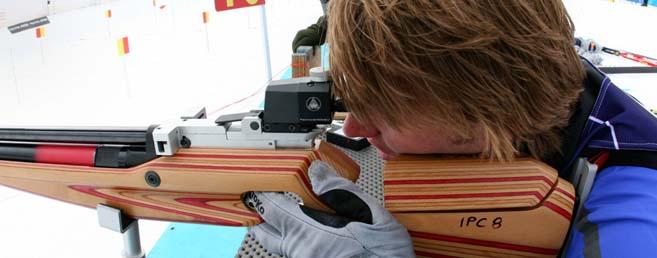Rules & Equipment
Rifle
The rifle shall be any type of air or CO2 rifle of conventional appearance with a five shot clip and in accordance with specifications of the International Union of Shooting’s (U.I.T) rule. For blind class, the rifle will be equipped with electro-acoustic glasses (optronic system).
Blind athletes are shooting with an electronic rifle that allows aiming by hearing. The closer the rifle points to the centre of the target the higher the tone is. The different tones that occur when the rifle is moved, allows the shooter to find the exact centre of the target.
Sit-Ski
An athlete with a lower-body impairment uses a sledge, which is a specially built chair that can be attached to a pair of skis. The skis are almost identical to standard skis, although shorter, and are attached to the chair with a standard cross-country binding.
Ski
Made from fibreglass, classical skis are usually 25cm to 30cm taller than the height of a skier. They are light, weighing less than 0.45kg each; and narrow, with curved tips and a cambered midsection, which is thicker and arched. Free technique skis are about 10cm to 15 cm shorter for greater manoeuvrability. They are also nominally stiffer and have tips that curve less than classical technique skis. The underside of both types of skis has a groove down the centre to keep the ski straight when going downhill.
Target
Biathlon uses metal drop down targets which consist of a white target face plate with five target apertures, behind which are five independently operating knock down, falling plate scoring targets. The scoring plates must be black. A hit must be indicated by the black target circle being replaced by a white indicator disc. The target size has a diameter of 30mm for visually impaired athletes (class B) and 20mm for athletes with a physical impairment (class LW).



